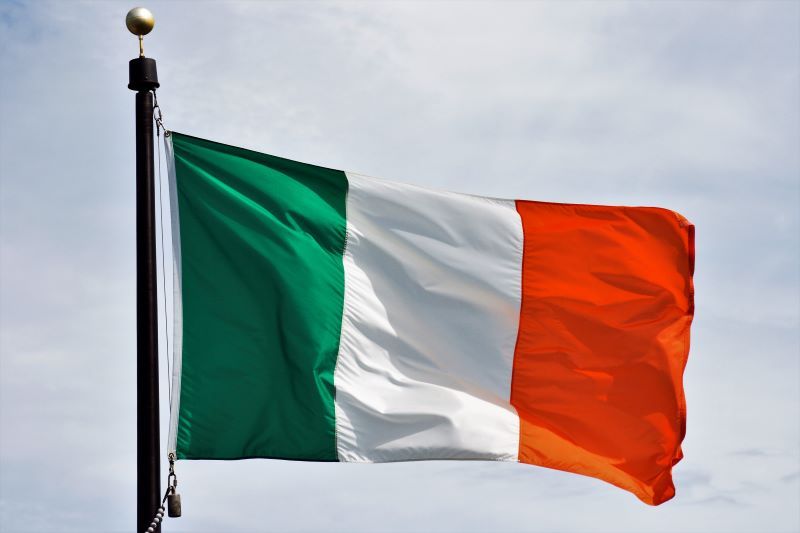Spanish aperitivo
The origin of 'aperitivo', a must before every Spanish meal
An aperitivo is eaten before meals, it opens the appetite and is a sacred tradition not only in the Spanish gastronomy, but in many European countries like Italy or France. However, it is very different to the ones enjoyed in the Spanish bars and terraces. The Spanish tortilla, a simple handful of olives or the famous russian salad are some of the most famous. But here we want to go further and discover the real origin of the aperitivo and travel through some of the most popular and traditional recipes that Spain has.
The origin of the aperitivo in Spain
We know it is a must to enjoy a good aperitivo with friends before almost every meal. But where does the word ‘aperitivo’ really come from? Well, its origin is linked with the Latin word (like the word ‘merienda‘) ‘aperire’, which means ‘to open’. And it went from there: then, it started to mean ‘whet the appetite’. It is said that the aperitivo was born with Hippocrates, who made, for the first time, a wine-based drink, to which he added herbs.
This drink was used to reopen the stomach or when a person had no appetite. It started, then, a tradition of having this bitter drink before large meals, and with centuries more spices where added to these wines. In fact, it was this which gave birth to the famous vermouth or vermú, which is now used with the same intention. The tradition of having an aperitivo at bars and meals started to consolidate in the everyday life. It became very popular in Italy during the 19th century and then it srpead throughout the rest of the world. In Spain is also known as ‘tapa’, as they are used for the same purpose and enjoyed at the same time, before lunch or meals, in general.
It is said that it was Alfonso XIII who, during a very windy day in Cádiz, in a tavern, put a slice of ham on the top of his drink to prevent the sand to fall into it. When he asked for a second round, this time he said: ‘with a tapa, please’, which meant ‘cover’. Another theory says that it was done to prevent flies to get into it. Anyway, it was used to cover the drink, and that’s when the concept of tapas was born.
A tour through the most popular aperitivos around Spain
From the classic bravas to the Basque gildas, there is an aperitivo for all tastes. The Spanish gastronomy is a fundamental part of our diet and culture, with very different dishes from every community. This tiny portion of food that goes always with the drink is not an exclusively Spanish tradition, but what is true is that it has some very particular characteristics. Its rich cuisine can be easily seen with this small gastronomic tour through some of the most famous aperitivos or tapas through Spain. Tapas, pintxos, montaditos, there is one for everyone.
Andalusia… where it all started
Andalusia starts this small route with its fried fish or ‘pescaíto frito‘, its chopitos, its gazpacho and salmorejo, or its anchovies in vinegar. The Andalusian cuisine includes its liquid gold in every fry, so appreaciated in the beach bars of Málaga or Cádiz. The delicious gazpacho and salmorejo are perfect for refreshing those summer months, when the sun burns. And… what can we say about anchovies? Just looking at it makes every mouth water, and its flavour doesn’t disappoint. This beautiful region is probably where the tradition of aperitivo and tapeo is most popular and practiced. But all over Spain we find terraces full of people enjoying it.
Jumping into the aperitivos of the deepest center of Spain
Meanwhile, the Community of Madrid, Castile La Mancha and Castile and León are famous for having a meat-based gastronomy, especially in smaller villages. Due to its colder weather, its cuisine is associated with hearty dishes, and all this is reflected in its aperitivos. In Madrid we find a very curious aperitivo that can also be enjoyed as a whole meal: the ‘bocadillo de calamares‘. And Madrid has no sea. This is probably the most well-known recipe of the city, believe it or not. Another gastronomic celebrity here are bravas, served as a free tapa with almost every beer. Croquettes of all types and Spanish tortilla on top of a piece of bread are also found in every bar.
Castile and León is famous for its cheeses, sausages and cured meats: torreznos are its classic regarding the aperitivo time. And its revolconas are a must if you visit this region. Aragón stands out for its Spanish ham and its cured meats as well. Extremadura joins this group of communities with a huge rural tradition with its migas, zorongollo and aperitivos with sausages. Las but not least, Castile La Mancha offers us many rural recipes, heavy and rich in nutrients. The atascaburras, carcamusa and migas stand out as aperitivos, but can also be enjoyed as meals.
The Mediterranean aperitivo is one of the best
Here, the aperitivo has a lot of tradition, where good weather always asks for a beer under the sun. The Valencian Community, with its beautiful coasts and rich gastronomy, is famous for its delicious seafood. Salted fish, sardines and shellfish are very prized dishes for an aperitivo. Besides, all the Mediterranean coast has a huge tradition of having ‘coca‘ before lunch, which can be topped with meat, vegetables or sardines.
Meanwhile, the Balearic Islands offer a wide variety of fried fish and shellfish as well. Its Arab influence left aperitivos as couscous. Murcia is full of terraces and gastronomic delishes from the garden, such as tomatoes and salads in all its forms, marineras, magras or zarangollo. Catalonia combines that Mediterranean tradition with meat dishes, like the fuet or butifarra. Its classic and star of many breakfasts is pa amb tomàquet. The escalivada or the samfaina are as well a must-try if you travel to the Catalan community.
A northern aperitivo couldn’t miss in the list
Galicia must open this last group of regions with its octopus dishes and seafood products, that star every Galician aperitivo. Stand out as well its cheeses, its ham and pies. Cantabria is famous for its squid rabas and its cheeses, without forgetting the famous cured anchovies.
La Rioja has similar aperitivos with a deeply meat-traditional dishes, like the chorizo and blood sausages starring its tables. Its sister, Navarre, stands out for its stuffed peppers and delicious sausages. The Asturian gastronomy is very linked with seafood, with the bonito or tuna in many of its dishes. We must mention the bollos preñaos as well, a classic of the Asturian aperitivo.
The Basque Country deserves a private mention
Here, tapas and pintxos are a deeply-rooted tradition in gastronomy. Thousands of bars and taverns compete for the best tortilla, the best gildas, and pintxos, in general. There is one for all tastes. Bilbao, San Sebastián or Pamplona are some of the best places to discover them, and there are even established gastronomic routes where the visitor will enjoy the best of the Basque cuisine.
The Canary Islands close up high
You can’t leave the Canary Islands without ordering a good dish of papas arrugás to start your meal. Together with a good and spicy mojo, a delicious sauce, this is probably the most famous aperitivo in the archipielago. The almogrote is also a popular recipe eaten as a starter, made of a strong cheese and spices, it is typical of La Gomera, but enjoyed in all the islands.
Tricolor Irish flag
The green represents Irish nationalism; the orange, Ireland’s Protestant minority, and the Orange Order; the white, lasting peace between the two.

Ireland's tricolor (Getty Images)
For his role in the 1848 rebellion, Meagher was tried for treason and sentenced to death, but this sentence was commuted to banishment to Van Diemen’s Land in Australia. He would later escape to a new life in the United States.
While the tricolor had gained traction as a symbol for Ireland until the 1916 Easter Rising, the primary flag of Ireland was green with a harp in the center (the harp remains as Ireland’s national symbol; Ireland is the only country in the world that has a musical instrument as such). That flag was used as early as 1642, by Owen Roe O’Neill, an Irish soldier, and leader of the O’Neill dynasty.
During the Rising, both flags were flown above the GPO, the headquarters of the rebels, and the tricolor became more widely accepted.
After the Rising, it was adopted by the IRA during the Irish War of Independence (1919 – 1921), was a symbol of the Irish Free State from 1922 – 1937, and then, when the Irish constitution came into law later that year, it was confirmed as the official flag of Ireland by Article 7, which reads: “The national flag of Ireland is the tricolor of green, white and orange.”
Today, the tricolor is a symbol of Irish pride and remains an important reminder of the peace that has been achieved and the progress that has yet to be made.



